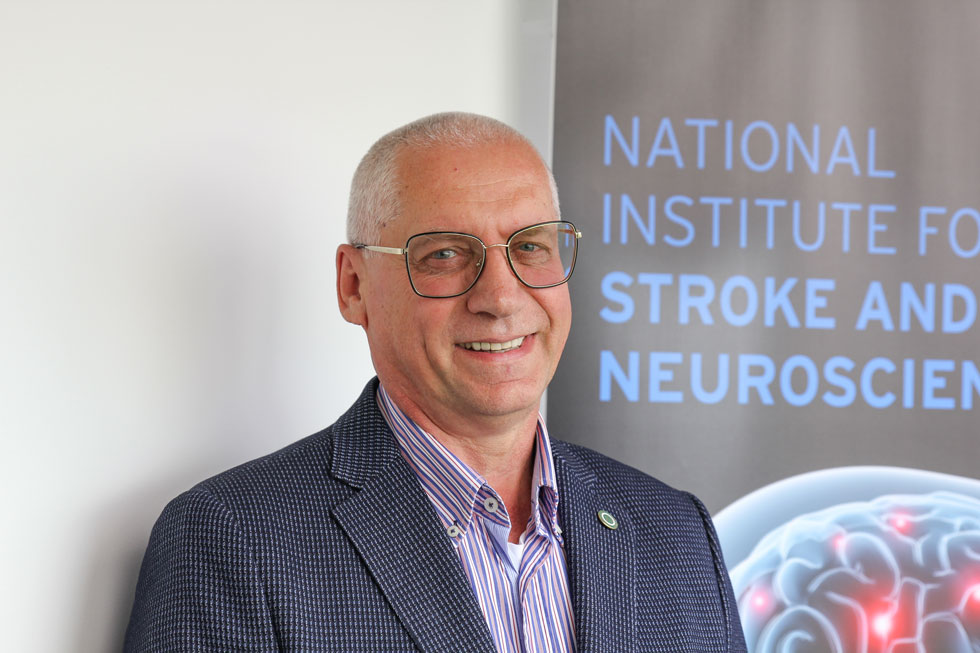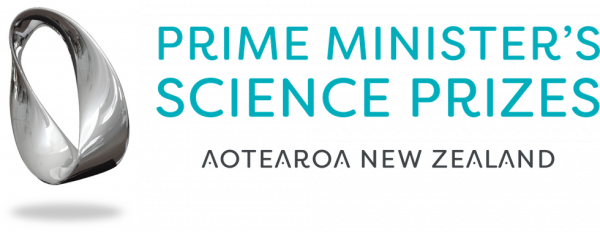
Understanding and preventing stroke globally
The multidisciplinary National Institute for Stroke and Applied Neurosciences, led by Professor Valery Feigin FRSNZ at Auckland University of Technology, has won the Te Pūiaki Putaiao Matua a Te Pirimia Science Prize. Other team member co-investigators are Professor Rita Krishnamurthi, Dr Alexander Merkin and Balakrishnan Nair. The team has spent more than 40 years uncovering the epidemiology of stroke and associated conditions and developing highly usable digital tools for patients and clinicians to reduce stroke risk worldwide.
"Our team is trying to develop the most cost effective, widely applicable strategies to reduce stroke burden in New Zealand and internationally," says Valery.
Global insights into stroke epidemiology.
The team's work has led to the insight that stroke has become the second leading cause of death and the second leading cause of disability in the world, with its burden fast increasing over the last two decades. They were the first to show 30-year trends in ethnic disparities in stroke incidence and outcomes based on their epidemiological studies. A surprising finding has been that stroke incidence in developing countries in the 21st Century exceeded stroke incidence in developed countries and almost 90% of the stroke burden resides in low to middle-income countries.
New Zealand has an unexpectedly high level of stroke incidence overall (fourth highest in the OECD countries) particularly in Māori and Pacific people. "They have two or three times greater risk of having a stroke compared to New Zealand Europeans and they have worse outcomes," Valery says.
The results of the 30-years of epidemiology studies have filled the gap in accurate epidemiological data – data on incidence, prevalence, mortality outcomes and risk factors.
"This data is the backbone for policymakers and makes it possible to plan evidence-based healthcare."
This work has also shown that primary prevention strategies are not sufficiently effective because they are heavily biased toward those at high risk of cardiovascular disease.
"But the problem with that is most strokes and heart attacks occur in people of low and moderate risk – 80% of those who have a stroke are not considered high risk for cardiovascular disease."
Stroke is in no way just a disease of the elderly. More and more people under 65 are having strokes and lifestyle factors that contribute to stroke accumulate throughout life, Valery explains.
"We ideally would control [stroke risk] from conception."
"By the time we are at higher risk of stroke in later life, we have limited ability to lower our risks. That's why it's important that younger people know about the risk factors for stroke and can reduce them with range of diet and lifestyle factors while there is still time to make a big difference."
Preventing stroke with digital technology
Valery says stroke is very preventable and the team has developed a number of digital tools to assist people to lower stroke risk.
One of the keys to the team's work in stroke prevention has been the idea of relative risk. So instead of focusing on the absolute risk of a person having a stroke within 5 to 10 years, which may be extremely low, you focus on how much the risk of a stroke is increased compared to a person of the same age and profile with no elevated risk factors.
"This is motivating for people as they immediately want to know what they can do to reduce their risk," Valery says.
The free mobile app called Stroke Riskometer is one of the two world-first digital tools developed by the team.
With a simple interface, a person can understand their stroke risk and learn how they can reduce it. "There are reminders, reminders for medications and a lot of support and tools to continue to motivate people to make changes and to maintain those changes."
"It provides a perfect interface to communicate health information about stroke, risk factors and how to control them."
With 95% of New Zealand adults owning a smartphone, if all these people use the tool, it will be a "virtually population-wide intervention".
Given the burden of stroke in developing countries, Valery says it's important that the app can run on inexpensive smartphones and is free. "Four billion people in the world live on $5.50 a day. They have no access to health care. Stroke Riskometer could be the only source of reliable health information about stroke or stroke risk factors that they could have access to."
Valery says Stroke Riskometer was developed for communities and lay people but the other side of the problem is the lack of digital tools for clinicians.
"There were no such tools available in the world, and we were approached by people, doctors, saying 'we use Stroke Riskometer all the time but it would be nice to have something for the desktop computer that we could use'."
PreventS-MD was thus developed as medical information software that clinicians can use on their desktop computers during consultations and it has now been tested in 27 countries. "The testing showed that this tool has excellent usability. Excellent usability means that people are going to use it and the main advantage is that it saves clinicians time while motivating patients to make and maintain preventative recommendations given to them by the clinicians."
Valery says the software is close to being rolled out in Te Whatu Ora - Health NZ Waitematā and then across New Zealand.
The Chair of the National Stroke Network invited Valery to be part of the team to develop the Australian-New Zealand Stroke Management Guidelines. If the recommendations in the guidelines are widely followed, including the use of digital tools, the impact will be immense. "We can reduce stroke incidence by 50% within the next 5 to 6 years and the burden of dementia will also be reduced by at least 30%."
The need to prevent stroke in Aotearoa is obvious in the numbers: "There are currently 50,000 stroke survivors in New Zealand. In 20 years, there's going to be 100,000. What will hospitals be doing? The only solution is primary prevention."
Why study stroke?
Valery has spent more than 40 years studying stroke and sadly, the pathway into this area of research was the death of his father to a stroke when Valery was a recent medical graduate.
"He was relatively young, 50 years old, overall healthy, just a little bit overweight. He smoked and the most important risk factor he had was high blood pressure, hypertension. At that time when it happened, almost 50 years ago, there was no internationally well-recognised strategy for prevention of stroke. Effective treatment did not exist and prevention was at the embryo stage."
Prize
In awarding this prize, the selection committee said the team's work is outstanding and the impact has been "truly transformative".
"It combines all the elements of a scientific breakthrough – proof, technology, modelling and commercialisation. This research has made an incredible impact and will make a long-term contribution to health and social outcomes."
The award comes with a $500k prize that will allow the team to keep progressing their development of digital tools and epidemiological research for neurological health. They currently have five ongoing collaborative projects on digital tools for stroke and dementia. Valery hopes the prize will allow the Institute's plan for a Programme on Digital Solutions for Brain Health to come to fruition. This is the first time that researchers from Auckland University of Technology have won this prize.
The National Institute for Stroke and Applied Neurosciences (NISAN) team currently comprises 8 core academic staff, 4 associated academic staff and 28 research staff members.
For more information
Valery Feigin: 027 464 6200, valery.feigin@aut.ac.nz
About the Prize
TE PŪIAKI PUTAIAO MATUA A TE PIRIMIA SCIENCE PRIZE
Awarded to an individual or team for a transformative scientific discovery or achievement, which has had a significant economic, health, social and/or environmental impact on New Zealand and/or internationally.
This is one of five prizes awarded each year.
The Government of New Zealand introduced The Prime Minister's Science Prizes in 2009 as a way of raising the profile and prestige of science among New Zealanders, in Aotearoa and internationally.








